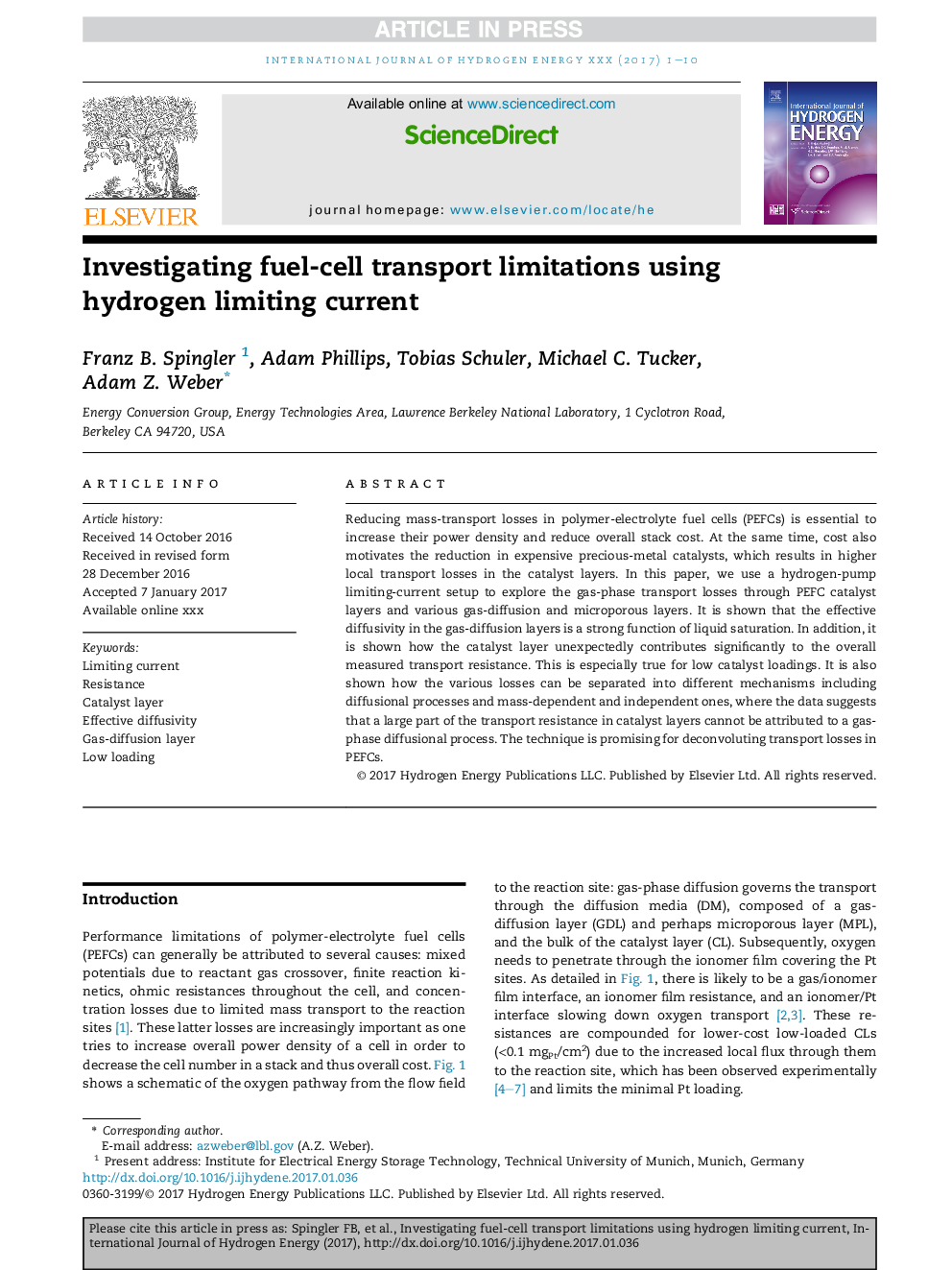| Article ID | Journal | Published Year | Pages | File Type |
|---|---|---|---|---|
| 5147339 | International Journal of Hydrogen Energy | 2017 | 10 Pages |
Abstract
Reducing mass-transport losses in polymer-electrolyte fuel cells (PEFCs) is essential to increase their power density and reduce overall stack cost. At the same time, cost also motivates the reduction in expensive precious-metal catalysts, which results in higher local transport losses in the catalyst layers. In this paper, we use a hydrogen-pump limiting-current setup to explore the gas-phase transport losses through PEFC catalyst layers and various gas-diffusion and microporous layers. It is shown that the effective diffusivity in the gas-diffusion layers is a strong function of liquid saturation. In addition, it is shown how the catalyst layer unexpectedly contributes significantly to the overall measured transport resistance. This is especially true for low catalyst loadings. It is also shown how the various losses can be separated into different mechanisms including diffusional processes and mass-dependent and independent ones, where the data suggests that a large part of the transport resistance in catalyst layers cannot be attributed to a gas-phase diffusional process. The technique is promising for deconvoluting transport losses in PEFCs.
Related Topics
Physical Sciences and Engineering
Chemistry
Electrochemistry
Authors
Franz B. Spingler, Adam Phillips, Tobias Schuler, Michael C. Tucker, Adam Z. Weber,
